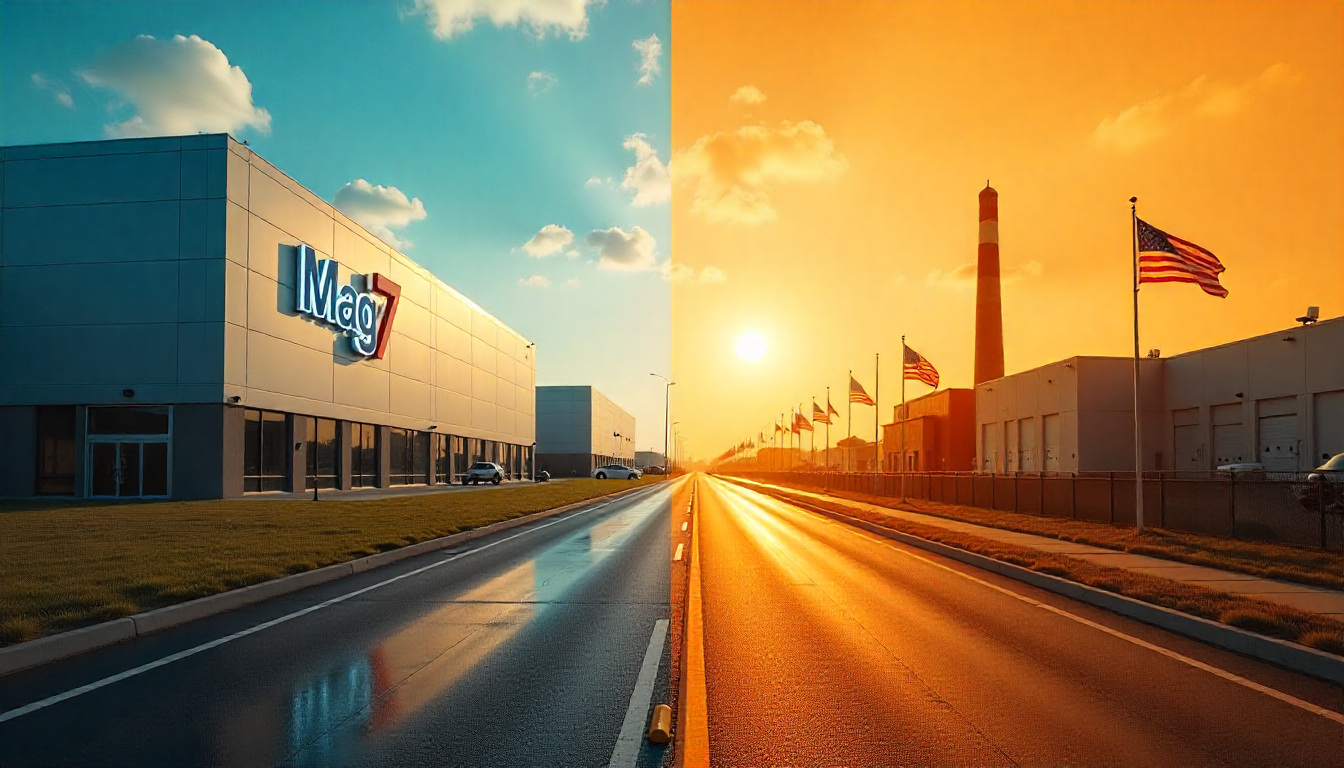Mag 7 Bets Big on Tech: $650B Investment Wave Defies Trump’s Domestic Manufacturing Agenda
While President Donald Trump pushes for a domestic manufacturing renaissance through tariffs and industrial policy, America’s top tech firms are moving full speed in the opposite direction—doubling down on digital infrastructure.
According to data from Lloyds Bank, the so-called “Magnificent 7”—Alphabet, Amazon, Apple, Meta Platforms, Microsoft, Nvidia, and Tesla—are expected to spend a combined $650 billion in capital expenditures (capex) and research and development (R&D) in 2025. That figure surpasses the U.K. government’s total annual public investment and underscores where U.S. corporate priorities truly lie: technology, not traditional industry.
From Physical Infrastructure to Digital Dominance
Despite rising trade tensions and political focus on reshoring U.S. manufacturing, private-sector capital is overwhelmingly flowing into software, semiconductors, AI compute, and cloud infrastructure. IT and software investment alone now makes up 6.1% of U.S. GDP.
Lloyds strategist Nicholas Kennedy attributes this shift to a “FOMO effect” driven by the rapid advance of artificial intelligence, prompting companies to reallocate investment budgets toward AI-aligned technologies.
“We’re witnessing a structural redirection of capital,” Kennedy said. “Even outside of political volatility and tariff uncertainty, firms are shifting resources from legacy industries to AI and digital innovation.”
U.S. Tech Capex Outpaces Broader Economy
U.S. corporate spending on IT equipment and software reached $1.45 trillion, rising 13.6% year-over-year. In contrast, investment in non-IT fixed assets declined by 4.9% in Q2 2025—marking the third consecutive quarterly drop.
GDP data released this week by the Bureau of Economic Analysis showed private fixed investment in IT jumped 12.4%, while broader capital investment outside of tech weakened further.
Kennedy noted that the temporary boost from Biden-era policies like the CHIPS Act has faded, leaving AI as the dominant investment theme.
Crypto and AI: Correlated Bull Markets
The tech-heavy capital allocation has had a noticeable impact on digital asset markets. Both bitcoin and Nvidia (NVDA) bottomed out in late 2022 following the launch of OpenAI’s ChatGPT—and have since led a synchronized bull run in crypto and AI.
This capital shift toward “bits over bricks” aligns with recent regulatory developments under the Trump administration. Several pro-crypto initiatives have passed in 2025, including clear regulatory frameworks for stablecoins and digital assets, and key appointments to agencies like the SEC and CFTC viewed as crypto-friendly.
Trump Media’s Q2 earnings report confirmed a $2 billion bitcoin treasury and $300 million options strategy, signaling institutional confidence in crypto as part of a broader digital investment thesis.
“The infrastructure of tomorrow isn’t physical—it’s programmable,” Kennedy added. “The capital markets are already telling us where they believe long-term value lies.”
Share this content:




